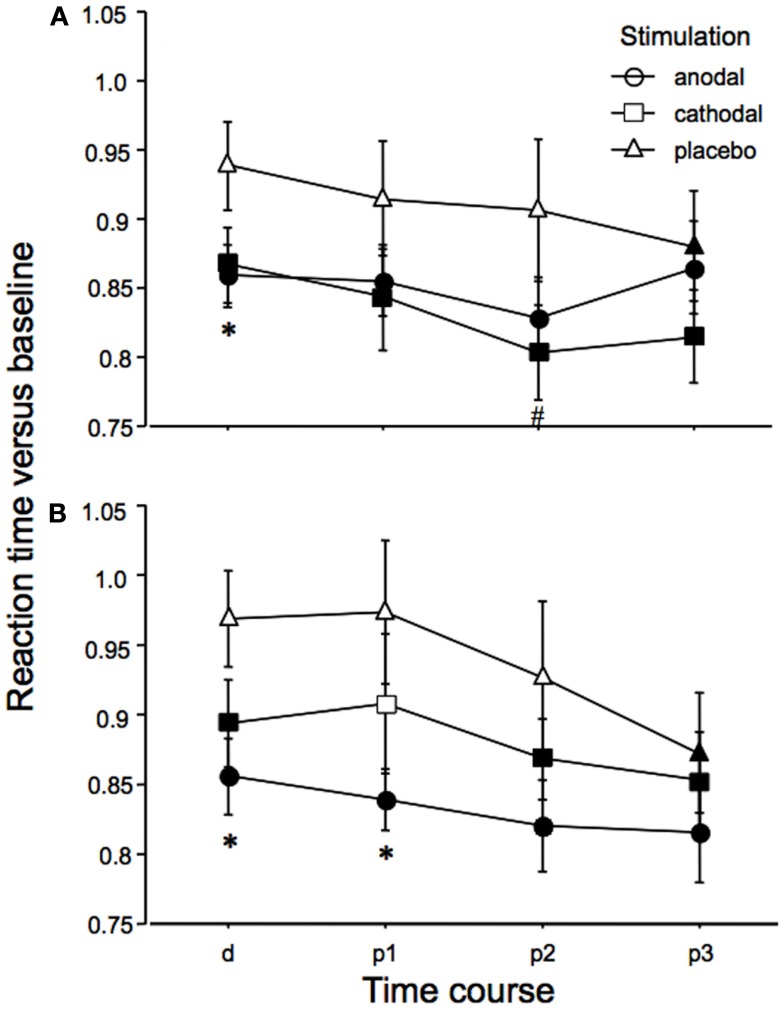Figure 3.
Emotional face identification is modified by tDCS: reaction times. Baseline-standardized reaction times for the identification of the position of negative (A) or positive (B) emotional facial expressions shown on a computer screen are depicted during (d) and after (p1–3; p1 = immediately and 5 min after tDCS, p2 = 10 and 20 min after tDCS, p3 = 30 and 60 min after tDCS), anodal, cathodal, and placebo tDCS. Reaction times become faster during the course of the experiment, thus indicating learning of the task in all stimulation and emotional conditions. Under both real stimulation conditions and for both facial expressions, reaction time reductions become earlier significant than under placebo stimulation. Under anodal tDCS, positive emotional facial expressions are faster identified as compared to placebo stimulation during and after tDCS. For emotionally negative facial expressions, anodal tDCS improves perception only during tDCS as compared to placebo stimulation. A minor effect can be seen for cathodal tDCS, as compared to placebo stimulation (p2 only). Filled symbols indicate significant reaction time differences as compared to baseline values, asterisks significant differences between anodal tDCS and placebo tDCS, and hash symbols significant differences between cathodal and placebo tDCS for a given time point (paired, two-tailed t-tests, p < 0.05). Vertical bars indicate standard error of mean.

